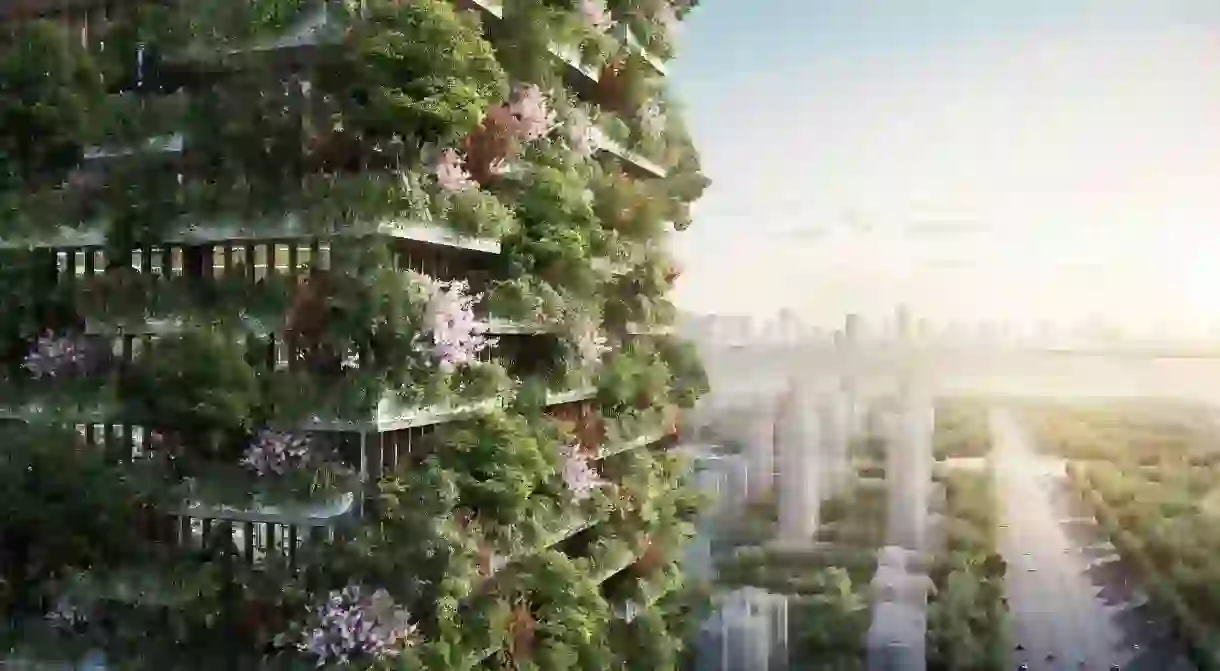Are Vertical Forests a Solution to China’s Air Pollution?

Stefano Boeri Architects announced plans for Asia’s first ‘vertical forest’ in Nanjing – a city plagued by some of the poorest air quality and pollution in the world.

With China’s air pollution wreaking havoc on the health and well-being of its citizens, the necessity for innovative solutions has never been so dire. Following the success of the residential vertical forest prototype in Milan, Stefano Boeri Architects is now building two green towers for the Nanjing Pukou District set for completion in 2018.
Known as Nanjing Green Towers, these vertical forests are designed to “regenerate local biodiversity,” according to their press release, and plans are already underway to bring the design into other pollution-ridden cities like Shanghai, Liuzhou, and Guizhou in the near future. According to Greenpeace, the Nanjing Pukou District has one of the lowest air quality levels in all of China.

The development will consist of two towers “characterized by the interchange of green tanks and balconies” with 1,100 trees from 23 local species and 2,500 cascading plants and shrubs. The towers will provide “25 tons of CO2 absorption each year and will produce about 60 kg of oxygen per day,” says Stefano Boeri Architects.
The first tower will house a museum, private rooftop club, and a green architecture school, while the second smaller tower will be a 247-room Hyatt Hotel, and the podium will “host commercial, recreational and educative functions, including multi-brands shops, a food market, restaurants, conference hall and exhibition spaces.”

While the design concept is exciting in theory, some are concerned with the carbon-footprint that comes with such large-scale construction. And understandably so, especially when the towers will most likely bring more tourists (and pollution from car-travel) into the burgeoning district. We’ll just have to see whether or not these grand ‘eco-conscious’ designs are actually eco-responsible, too.














